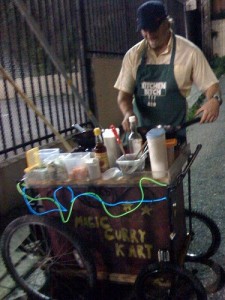It was a day of extremes.
I went yesterday to our local senior center to drop off some books for their library. I had a conversation with the ladies at the reception desk. Neither of them had heard of Kindles, or e-books in general. I directed them toward the Amazon home page, which for years has had that huge Kindle feature that kind of smacks you in the face and almost makes you forget why you arrived at Amazon to begin with. They looked at it, took the electronic tour, and decided that nothing beats a book.
I returned home later and another country was heard from. My daughter walked through the door after a day at middle school and advised that students, who cannot have cell phones with them during school hours (they have to be stored in their lockers), are now permitted to bring Kindles to school to use during study halls. And indeed, her fellow students are taking advantage of this policy Are they reading? Well…yes, reading what they are happily tweeting back and forth on Twitter and commenting on Facebook. I’m sure that this was not what the administration intended. In fact, it is quite possible that the school officials are unaware that Kindle is not just for reading anymore. It can be used for web surfing, listening to music, and yes, tweeting back and forth to keep one’s friends up to date on what is happening (“How R U I m soo bord!”). This hasn’t exactly been trumpeted by Amazon, but if you have a Kindle 2.0 or later, go to the home page, use the menu to go to the “experimental” link, and take a look. If the school thought that their charges would use this tool to catch up on their Cormac McCarthy or Robert Louis Stevenson (okay, or their Stephanie Meyer) they are about to be kissed by the goddess of disappointment.
As someone noted recently, the rate of change is accelerating everywhere, it seems, except at your local Bureau of Motor Vehicles office. Take phones, for but one example. Every time that I have been tempted to trade in my weathered but still functional Blackberry Pearl for the cellular equivalent of a trophy wife I have backed off. It seems that each day brings a new phone with a host of new functions. There are things that I could probably do with the Pearl — Jack Bauer used to download schematics of nuclear power plants with his — that I not only don’t know how to do, but also don’t know that I can do. Better to keep the less attractive but comfortable and familiar companion I have than to have to learn the bells and whistles of a new model. My son threatens to buy me a Jitterbug, which would be okay, actually. As far as technology in general is concerned, however, the demographics seem split into three groups: one that does not even know what technology is available; one that is aware of it but underutilizes it; and one that takes the potential to its designed limits, and even beyond. And that is true of the Kindle as well. There are still folks who think a Kindle is something you do to a fire. The majority of people who know it as an e-book reader may be unaware that you can do more with it than read on a sunny beach. And then, of course, there are the younger whiz kids. If that son or daughter of yours has suddenly seemed to acquire a newfound interest in reading which is manifested by taking a Kindle to school you might want to quiz them on what chapter of what book they’re reading. DY feel me?
* * *
What I’m reading: THE FALL by Del Toro and Hogan. Not that it’s scary or anything, but I’m on my second box of Depends.










